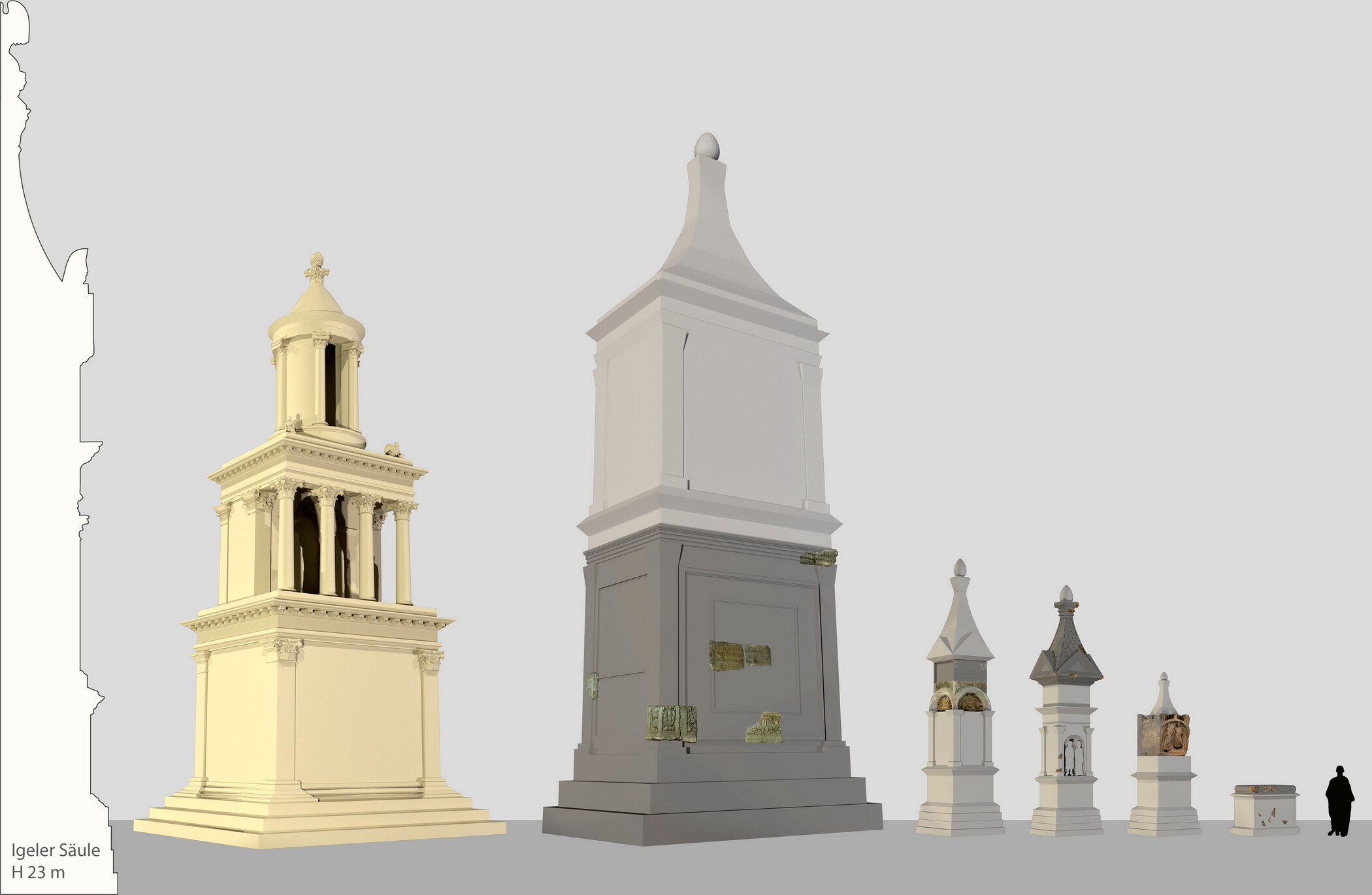Funerary Monuments from Western Civitas Treverorum in an Interregional Context
The aim of the bilateral Austrian-Luxembourgian project is the development and interdisciplinary evaluation of Roman tombs and tomb elements from the western part of the Civitas Treverorum (Roman province of Gallia Belgica). The focus lies on the consolidation, reconstruction and historical evaluation of the rich monumental heritage of this region, which today is shared by four states.

The research area
The project focuses on the numerous tombs in the archaeological museums of Arlon (B) and Luxembourg (L), which so far have been insufficiently researched and published. Finds from rural areas (part of France and the Belgian province of Luxembourg) will also be included in the investigation, as well as the eastern Treverian area (in cooperation with a research project of the German Research Foundation (DFG). By overcoming linguistic and historical differences from previous research approaches the finds are being studied coherently for the entire civitas for the first time.
Tombs in the Roman western provinces
Recent research on the tombs of the Roman western provinces has shown that large tomb buildings modelled on the mausoleums of the Mediterranean region can also be expected in the northern regions of the Roman Empire. Tomb elements from Bartingen (L) suggest an at least 16 m in height three-storey tomb building from the second quarter of the 1st century AD. Several comparable monuments from Arlon can now be processed and partially reconstructed in the course of the project using methods of building research.
Interdisciplinary research
In addition to the documentation and reconstruction techniques of building research, methods of scientific analysis as well as archaeological and historical evaluation are applied. The petrological analysis of the rock materials used will close an existing research gap for the area between the Moselle and Meuse rivers. Epigraphic, iconographic, typological and developmental questions will be investigated. The overall evaluation will be carried out in an archaeological and socio-historical context.
Images
The tombs of the Treverian area from the 2nd and 3rd centuries are particularly famous for their wealth of imagery. Diverse scenes of everyday life and working life convey a vivid picture of provincial rural society in a time of economic prosperity. The tomb buildings from the context of large villae rusticae, such as the villas of Bartringen or Echternach (L), are contrasted with finds from the Vici funerary roads (including Arlon, Dalheim, Titelberg) as well as the tombs of the metropolis of Augusta Treverorum/Trier.
Continuing the research
The research project will be expanded by the incorporation and publication of the new finds of 2011 from the settlement on the Titelberg (L). These finds will be integrated into the overall spectrum and analysed in context. A planned research project on the entire Treverian region will deal with overarching questions, including the topography of the landscape and its reception.
Principal investigator
- Roland Dreesen
- Eric Goemaere
- Sophie Insulander
- Isabella Kitz
- Jean Krier (hon.)
- Christine Ruppert
Project Partner
Université du Luxembourg, Institut d'Histoire (Andrea Binsfeld)
Cooperations
- Centre national de la recherche archéologique, Luxembourg (CNRA)
- Musée national d'histoire et d'art, Luxembourg (MNHA)
- Musée Archéologique, Arlon
- Institut archéologique d'Arlon (IAL)
- Belgian Royal Institute of Natural Sciences (R. Dreesen, E. Goemaere)
- TU Berlin, Institut für Architektur
Duration
04/2016–03/2021
Funding


